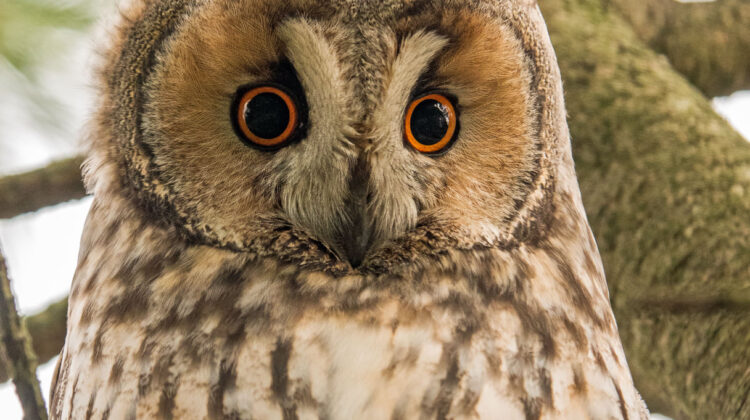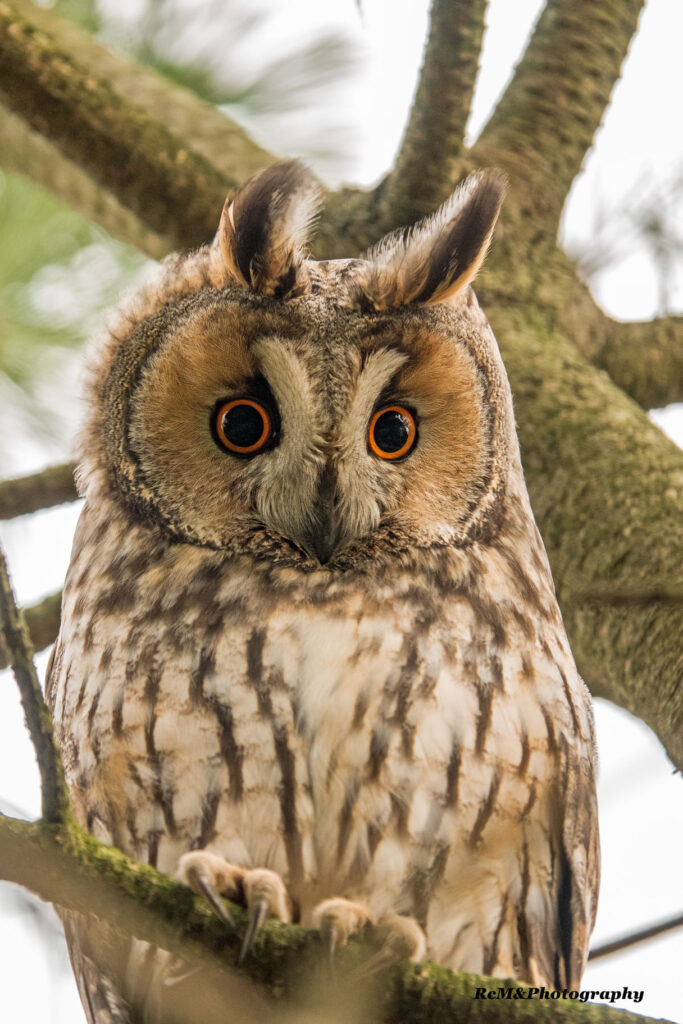
The Long-eared Owl (Asio otus) is a species of owl that is well known for its distinctive appearance and hooting calls. This species is found throughout the Northern Hemisphere, and it is a fascinating bird to observe and study. In this article, we’ll take a closer look at the Long-eared Owl and what makes it unique.
Appearance
One of the most distinctive features of the Long-eared Owl is its long, ear-like tufts of feathers on its head. These tufts are used for camouflage and communication with other owls. The Long-eared Owl has a brown and grey plumage with black and white streaking, which helps it blend into its forested habitat. It is a medium-sized owl, with a body length of about 12-16 inches and a wingspan of approximately 36-39 inches.
Diet and Hunting Habits
Long-eared Owls are nocturnal hunters that feed on small mammals such as mice, voles, and shrews, as well as small birds and insects. They hunt by perching quietly and waiting for prey to come within striking distance, and then using their sharp talons to capture their prey. These owls are skilled hunters and are able to capture their prey quickly and efficiently.
Migration and Roosting
Long-eared Owls are migratory birds, with some populations moving to more southern locations during the winter months in search of food. They are also known to roost communally in the winter, sometimes gathering in large numbers in dense trees. This behavior helps to conserve energy during the cold winter months and provides a sense of safety in numbers.
Conservation Status
The Long-eared Owl is considered to be of “Least Concern” by the IUCN Red List. While the species has a wide range, it is estimated that its populations are declining due to habitat loss, human disturbance, and other factors. Conservation efforts are underway to help protect and preserve Long-eared Owl populations and their habitats, and to ensure that these fascinating birds continue to thrive in the years to come.
In conclusion, the Long-eared Owl is a fascinating species that is well worth learning about. Whether you’re a birdwatcher, a nature enthusiast, or simply someone who appreciates the beauty of the natural world, this species is sure to captivate your imagination. So, the next time you’re out in the wilderness, be sure to keep an eye out for the distinctive call and striking appearance of the Long-eared Owl!


Leave a Reply